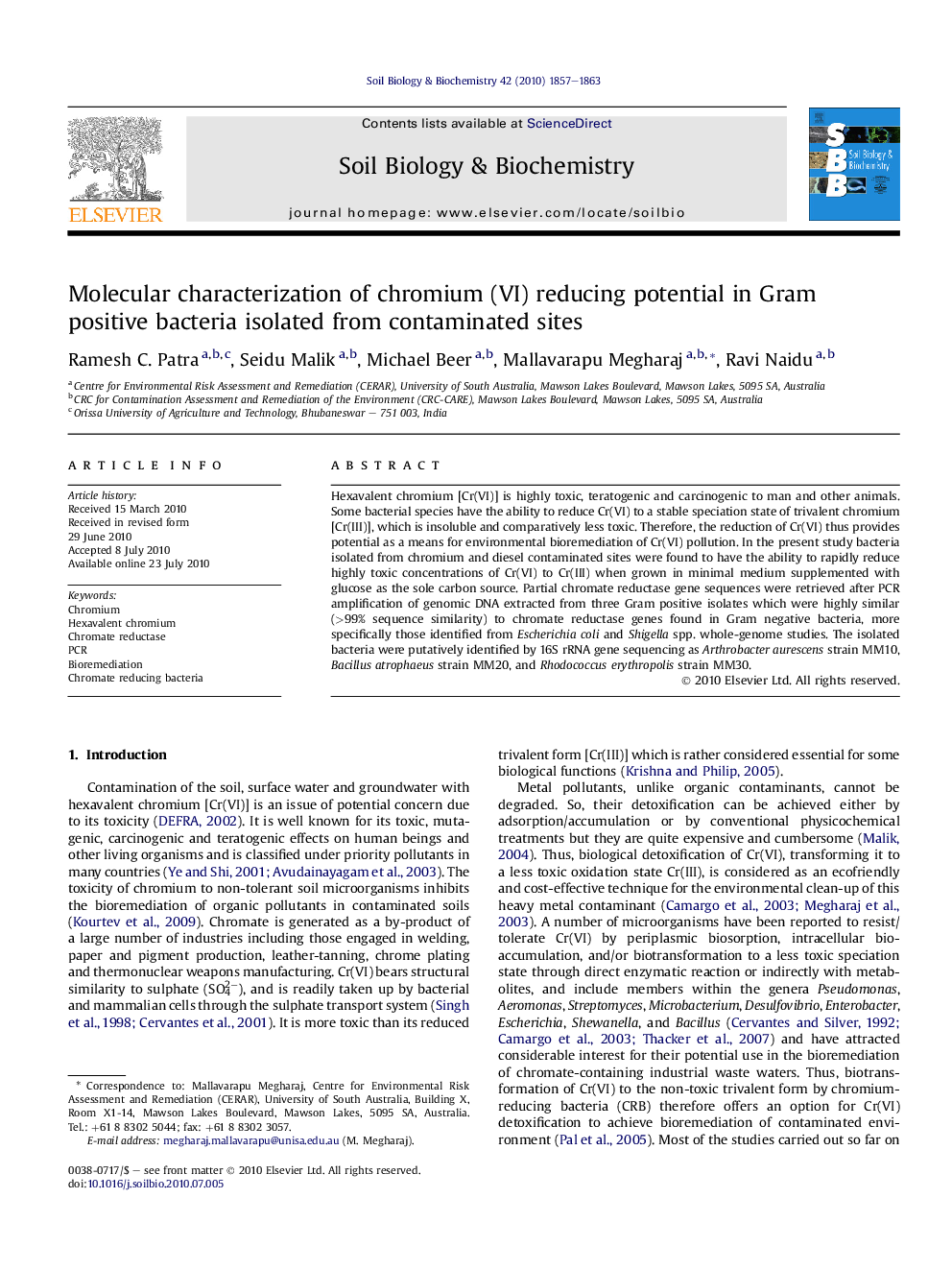| Article ID | Journal | Published Year | Pages | File Type |
|---|---|---|---|---|
| 2025423 | Soil Biology and Biochemistry | 2010 | 7 Pages |
Hexavalent chromium [Cr(VI)] is highly toxic, teratogenic and carcinogenic to man and other animals. Some bacterial species have the ability to reduce Cr(VI) to a stable speciation state of trivalent chromium [Cr(III)], which is insoluble and comparatively less toxic. Therefore, the reduction of Cr(VI) thus provides potential as a means for environmental bioremediation of Cr(VI) pollution. In the present study bacteria isolated from chromium and diesel contaminated sites were found to have the ability to rapidly reduce highly toxic concentrations of Cr(VI) to Cr(III) when grown in minimal medium supplemented with glucose as the sole carbon source. Partial chromate reductase gene sequences were retrieved after PCR amplification of genomic DNA extracted from three Gram positive isolates which were highly similar (>99% sequence similarity) to chromate reductase genes found in Gram negative bacteria, more specifically those identified from Escherichia coli and Shigella spp. whole-genome studies. The isolated bacteria were putatively identified by 16S rRNA gene sequencing as Arthrobacter aurescens strain MM10, Bacillus atrophaeus strain MM20, and Rhodococcus erythropolis strain MM30.
